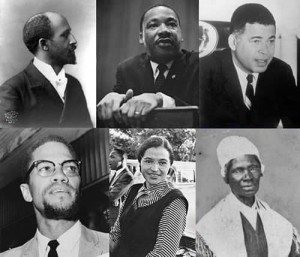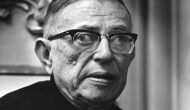 In a February syndicated column, Pulitzer Prize-winning author Cynthia Tucker called for an end to Black History Month. Separating black history from America history, she said, minimizes “the myriad ways in which black Americans’ accomplishments are part of the national mosaic [by making] the contributions of a few well-known black men and women seem like a historical exception.”
In a February syndicated column, Pulitzer Prize-winning author Cynthia Tucker called for an end to Black History Month. Separating black history from America history, she said, minimizes “the myriad ways in which black Americans’ accomplishments are part of the national mosaic [by making] the contributions of a few well-known black men and women seem like a historical exception.”
That someone of Tucker’s stature thinks it’s time to end the month-long recognition of black history indicates how far our country has come in weakening its racist heritage. And yet ending Black History Month won’t improve the fit of black history into the national mosaic, because so much of it is exceptional. Only blacks lived under the worst America had to offer, maintained faith in America’s promises, and pushed our country to live up to its noblest ideals as articulated in the Declaration of Independence.
Without Black History Month, the major source of information would be textbooks. But no American history textbook to date has been able to sustain the narrative of the different but related experiences of slavery and segregation, the legal struggle to eliminate them, and the creation of an America where truly all human beings are created equal and weave all of that into one comprehensive national story. Among the better attempts, America and Its People: A Mosaic in the Making (many editions) often makes good on its promise “to underscore the pivotal role that ethnicity, race, and religion have played in our nation’s social, cultural, and political development.” Yet the black story vanishes for a hundred plus pages — more than once! — suggesting how difficult it is to braid the various strands.
Only recently did American history textbooks incorporate black history. Until the 1960s, the narratives were essentially exclusionary. Where blacks did appear, it was usually to describe their inferior social position. The omission was not accidental. Blacks had no place in a grand narrative of an America whose democratic Teutonic origins gave rise to the “village heroes [at Lexington and elsewhere] who were more than of noble blood, proving by their spirit that they were of a race divine.” (George Bancroft, History of the United States from the Discovery of the American Continent, 1858)
Nor did blacks have a place in the frontier experience lauded by historian Frederick Jackson Turner for establishing the quintessential American characteristics: toughness, resourcefulness, individualism, and a predisposition for democracy. (The Closing of the American Frontier,1890)
Nor was there any place for blacks in the accounts provided by Progressive historians in the early twentieth century who presented the story of America’s march toward freedom as a whites-only endeavor. One of the best known, Charles Beard, mocked “the Negroes’” part in this splendid endeavor as having been “ludicrous if they had not been pitiable.” (American Government and Politics, 1911)
Only in the late 1940s did historians begin to study slavery from the slave’s point of view and incorporate slave narratives written before and during the Civil War in their assessments, Harriet Jacob’s, Incidents in the Life of a Slave Girl (1861) among them. On the one hand, these narratives emphasized the deprivations of slavery in lurid scenes of horror and violence and provided grist for abolitionists in their fight against the “peculiar institution.” On the other, they revealed a resilient culture in slave quarters, and a people who managed to build a vibrant society, hidden from whites, with its own music, religious practices, and loving relationships to sustain their dignity and hopes. (John Hope Franklin’s From Slavery to Freedom, 1947)
Despite these revelations, and the 2300 oral slave narratives collected by the Federal Writers Project in the 1930s, old stereotypes persisted. In his rejection of portrayals of slavery as a system in which fellowship existed between master and slave “characterized by propriety, proportion, and cooperation,” (Ulrich Phillips, American Negro Slavery, 1918), Stanley Elkins erred in the opposite direction by asserting that slaves came to assume their masters’ view of them as “Sambos.” (Slavery, 1959)
The 1960s saw the study of black/African American history become an academic staple. At its worst, it encouraged reverse separatism, for example, the idea that only blacks were qualified to teach black studies. At its best, it refuted older notions that equated black history with what whites had come to believe was true, that blacks were passive objects to whom things happened. (C.Vann Woodward, Presidential Address to the Organization of American Historians, 1969)
Today, the writing of black history remains a work in progress. To end Black History Month and leave it to textbooks alone to convey the tribulations and the triumphs that make up the historical experiences of this group of Americans would be unwise. Black History Month provides information and affirmation via lectures, workshops, concerts, plays, poetry readings and remembrances, many led by prominent blacks from all walks of American life, an appreciation unmatched by any American history textbook.
Abolishing Black History Month will not lead to a more integrated national mosaic, but will put out of sight/out of mind this still incompletely understood American story. In the transition of the United States from a racist to a racialist society, one that tolerates and even celebrates differences, black visibility and acceptance has increased significantly. Despite these changes, ours is still a country where a radio host described the Rutgers women’s basketball team with a racial slur and a university president touted the Three-Fifths Compromise, in which slaves were counted as three-fifths of a person for purposes of representation and taxation, as a shining example of how a polarized people could come together, (New York Times, February, 24, 2013).
We need more, not fewer, ways to keep the black experience in the public spotlight from which it was excluded for far too long.
To buy Harvey Asher’s new book, click on the link below.
Harvey Asher
After receiving his doctorate from Indiana University, Harvey Asher taught a variety of courses in history and interdisciplinary studies for thirty-five years at Drury University, a liberal arts school in Springfield, Missouri. His articles on themes in Russian history, American history, and the Holocaust have appeared in the Russian Review, Kritika, the Journal of Genocide Research, the Russian Dictionary, the SHARF Newsletter, Federalism in America: An Encyclopedia, and Lessons and Legacies of the Holocaust. He is also the author of The Drury Story Continues, an informal but thorough history of the school.


![Sunset - Pelham Shore Park - Long Island Sound [PHOTOS]](https://sheamagazine.com/wp-content/plugins/special-recent-posts-pro/cache/MjAwMTAwbm9JTUdfMzM3MC1SRVNJWkU=.jpg)
![Let's Go to Chinatown, Shall We? [PHOTOS]](https://sheamagazine.com/wp-content/plugins/special-recent-posts-pro/cache/MjAwMTAwbm9jaGluYXRvd24tMi1idy0=.jpg)
![Scenes from Washington Square Park - NYC [PHOTOS]](https://sheamagazine.com/wp-content/plugins/special-recent-posts-pro/cache/MjAwMTAwbm9JTUdfNDA1Mg==.jpg)



![Let's Go to the Empire State Building - Shall We? [PHOTOS]](https://sheamagazine.com/wp-content/plugins/special-recent-posts-pro/cache/MjAwMTAwbm9JTUdfMzkxNjE=.jpg)









